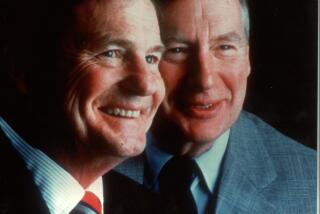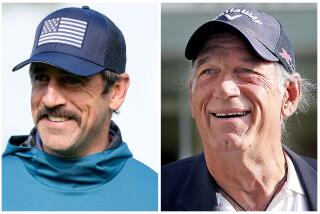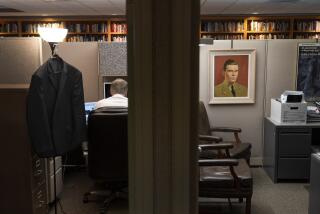JFK assassination: 50 years ago today the conspiracy theories began
It was the assassination that launched a thousand conspiracy theories. Soon after President John F. Kennedy was killed on Nov. 22, 1963, the “who killed Kennedy?” debate began, and 50 years later, it continues.
There have been books, movies and television shows devoted to the topic. Never mind the official ruling of the Warren Commission, that fact-finding committee established by the U.S. government. The majority of Americans -- 61% -- believe that Lee Harvey Oswald did not act alone.
That contradicts the commission’s conclusion that Oswald, and Oswald alone, planned and carried out the killing of the president.
This year marks the 50th anniversary of the shooting, rekindling speculation about the “true” identity of Kennedy’s killer, which, depending on whom you ask, could be the KGB or lizard people.
Below are some of the top theories. There tends to be in many theories a mix of fact, presumption, rumor, falsehood and even gymnastic leaps of logic. But each, at one point or another, has been seen to hold water -- if not by authorities then by conspiracy theorists.
Organized crime
It’s been revealed the government had several ties to organized crime in the late 1950s and early 1960s, with the particular aim of removing Fidel Castro from power in Cuba. Many conspiracy theorists have taken this revelation and from it concluded that organized criminals, displeased with Kennedy’s inability to eliminate Castro, played a role in his eventual assassination.
A report filed to the Select Committee on Assassinations concluded several prominent criminal leaders had motives to assassinate Kennedy. For example, New Orleans Mafia boss Carlos Marcello was targeted by Robert Kennedy’s anti-crime crusade; however, no concrete evidence exists proving the mob’s involvement.
Furthermore, the committee discounted the possibility of organized criminal involvement, though it admitted “the available evidence does not preclude the possibility that individual members may have been involved.”
The same panel concluded Jack Ruby, the man who killed Oswald as he was being transported by officials, although a minor criminal, was acting out of “ ‘genuine shock and grief’ and strong affection for President Kennedy and his family.”
Photo: Nikita Khrushchev, seen in 1961. (Associated Press)
The Soviet Union
The most obvious scapegoat of them all, the Soviet Union, and Kennedy had sparred several times already during the president’s first term, with the two nearly going to war during the Cuban missile crisis. After the Soviet Union left Cuba, the theorists suggest, the nation set out to bring about Kennedy’s death.
Oswald’s complicated history with the Soviet Union muddies the water further, as he defected to the Soviet Union in 1959 before returning to the U.S., in June of 1962. Oswald was long sympathetic to communist causes and visited the Soviet Embassy in Mexico City seven weeks before the shooting.
But FBI sources within the Soviet Union have documented the response to the shootings in Russia. Apparently caught unaware, the Soviets scrambled to identify those responsible and gather extensive intelligence about the new president, fearing any unpredictable elements.
Col. Boris Ivanov, chief of the KGB in New York City, reportedly went so far as to label the assassination a problem for the organization and directed resources toward discovering who was responsible and mitigating any fallout.
Photo: Fidel Castro, seen in 1961. (Alan Oxley / Getty Images)
Fidel Castro
The theory the Kennedy assassination was sponsored by Cuba is based on a simple “eye-for-an-eye” equation: The CIA tried several times during Kennedy’s administration to kill Cuban President Fidel Castro so, in exchange, Castro provided the means for Oswald to kill Kennedy.
Speculation was fueled by the testimony of Clare Boothe Luce, former ambassador and wife of Time publisher Henry Luce.
She claimed she had received a call the night of the assassination from a member of an anti-Castro group. Oswald had allegedly approached the group with the offer to kill Castro, but upon further inspection of Oswald’s past, her source said they had learned Oswald was a hired gun for the Cuban government.
Oswald also visited the Cuban Embassy in Mexico City, though what he did there is disputed.
But both the Warren Commission and House Select Committee on Assassinations found no evidence of Cuban involvement, and attempts to discover Luce’s sources were in vain.
But even LBJ alluded to Castro’s possible involvement, telling ABC reporter Howard K. Smith, “Kennedy was trying to get to Castro, but Castro got to him first,” in 1968.
Photo: Vice President Lyndon B. Johnson is sworn in as president after JFK’s death. (Getty Images)
Lyndon B. Johnson
Kennedy and then-Vice President Lyndon B. Johnson didn’t have the best relationship, with Kennedy reportedly telling secretary Evelyn Lincoln his running mate for the 1964 election “will not be Lyndon.”
So it was all but inevitable LBJ would become a figure in the conspiracy theories about Kennedy’s death. As early as 1968, theories began to take shape with the release of the book “The Dark Side of Lyndon Baines Johnson,” which accuses Johnson of orchestrating the shooting.
A 2003 book “Blood, Money & Power,” by Barr McClellan, elaborated on the LBJ theory, adding in oil barons and big money for good measure. The History Channel based an episode of its film series “The Men Who Killed Kennedy” off of the book, accusing LBJ of responsibility for the assassination. The series was widely criticized, and the History Channel decided never to air it again after a committee of historians found it to be full of “hearsay, gossip and innuendo.”
Photo: Walker’s home in Dallas, Texas. (Associated Press)
Gen. Edwin A. Walker
A veteran of the Korean War and WWII, Gen. Edwin A. Walker resigned from the Army in 1961 after he was caught spreading John Birch Society literature to troops, violating laws prohibiting federal employees from political engagement during their work.
Walker lived in Texas during the assassination, and an aide had distributed now-notorious fliers accusing Kennedy of treason the day Kennedy was killed.
Those fliers prompted attention from law enforcement, which quickly absolved Walker of any suspicion. In fact, according to testimony from Marina Oswald, Walker himself had been a target of Oswald, and was responsible for an attempt on Walker’s life on April 10, 1963.
The “ultra right”
CIA materials point to sources within the Soviet Union documenting the view of some officials Kennedy was killed by “ultra-right” elements within the U.S with the goal of prompting a “coup” that would thaw the Cold War and spur military action against the Soviets. No credible evidence has been uncovered to support the Soviet rumors.
More to Read
Start your day right
Sign up for Essential California for news, features and recommendations from the L.A. Times and beyond in your inbox six days a week.
You may occasionally receive promotional content from the Los Angeles Times.






